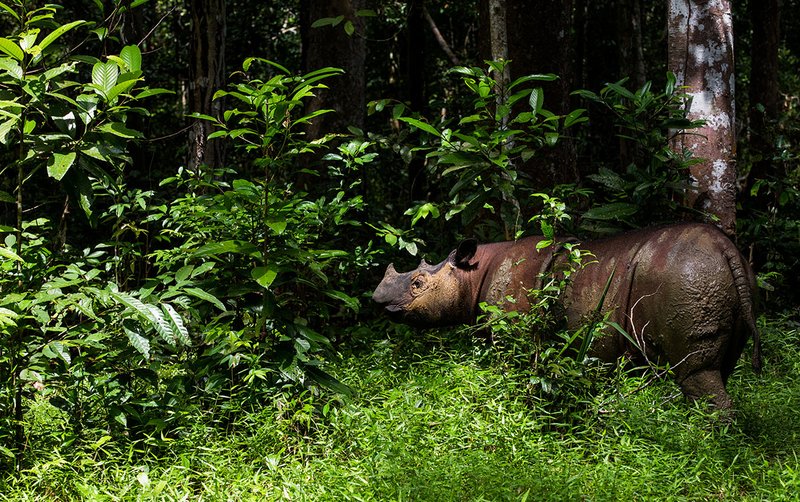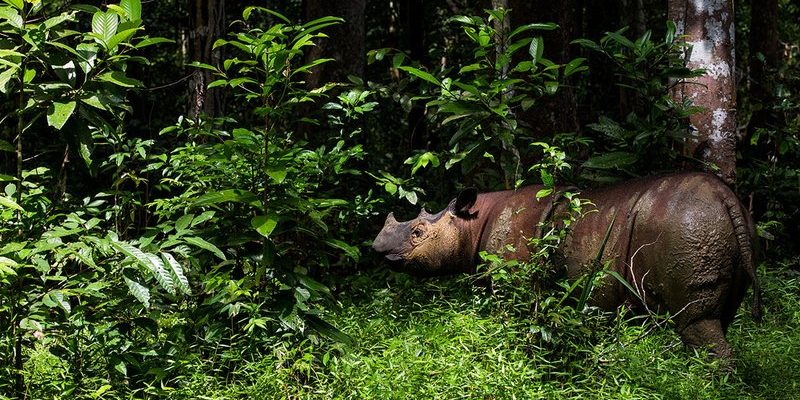
Imagine Sumatran rhinos as the shy introverts of the rhino world, preferring the secluded nooks of dense tropical forests over the open savannas. Unfortunately, they’re also one of the most endangered species on the planet, primarily due to habitat loss and poaching. So, where exactly do these elusive animals make their home? Let’s dive into their habitat, distribution, and what makes it so crucial for their survival.
Habitat Preferences of Sumatran Rhinoceroses
Sumatran rhinoceroses love lush, humid environments. They thrive in tropical rainforests, where the canopy is thick and the undergrowth is rich. Picture a dense jungle filled with tall trees, vines, and a variety of plants; that’s their playground! These habitats not only provide food—such as leaves, fruits, and shrubs—but also cover from predators and human disturbances.
Here’s the thing: Sumatran rhinos are solitary animals. Unlike elephants or some other wildlife species that form social groups, they prefer to roam alone. This solitary nature means they need large territories with plenty of resources to thrive. They usually inhabit areas that are at least 20 to 30 square kilometers, though they may range further in search of food or mates.
Geographic Distribution: Where to Find Sumatran Rhinoceroses
You might be wondering where in the world these fascinating creatures can be found. Sumatran rhinoceroses are native to Southeast Asia, primarily residing on the islands of Sumatra and Borneo. Historically, they roamed across a larger area, but habitat degradation and hunting have significantly shrunk their range.
The Sumatran rhino can be found in several protected areas, including national parks like Bukit Barisan Selatan and Way Kambas in Sumatra. In Borneo, they are primarily found in Sabah, where conservation efforts are underway to protect their habitat. These regions have dense forests and wetlands, which provide the humidity and shelter essential for their survival.
The Role of Forest Ecosystems
Forests play an essential role in the life of Sumatran rhinoceroses. These ecosystems are not just a home; they’re a source of survival. The jungles provide a wealth of food options, allowing these rhinos to munch on a variety of plants to get the nutrients they need. The lush environment also helps maintain the humidity levels crucial for their skin, which can easily dry out.
Moreover, these forests act as a natural barrier against threats. The thick vegetation helps protect Sumatran rhinos from poachers and predators. However, with deforestation and human encroachment, these natural shields are rapidly disappearing, making the rhinos more vulnerable.
Impact of Habitat Loss
Sadly, habitat loss has become a significant threat to Sumatran rhinoceroses. As forests are cleared for agriculture, logging, and urbanization, these animals find it increasingly challenging to find safe and suitable homes. It’s like taking away the living room of a shut-in who relies on that space for comfort and security.
This decline in habitat leads to fragmentation, where the remaining forest patches are isolated from one another. As a result, Sumatran rhinos may struggle to find mates, leading to a decrease in genetic diversity. This can have dire consequences for the species, making them more susceptible to diseases and reducing their overall resilience.
Conservation Efforts and Protected Areas
Conservation efforts are vital for the survival of Sumatran rhinoceroses. Various organizations and governments are working to protect their remaining habitats. This includes establishing and maintaining protected areas where these rhinos can live without the threat of poaching or habitat destruction.
In Indonesia, national parks like Way Kambas and Bukit Barisan Selatan are crucial for the protection of the Sumatran rhino. These areas are actively monitored, and teams work on anti-poaching patrols to ensure the safety of the rhinos. Additionally, habitat restoration projects help replant native vegetation, creating a more hospitable environment for these creatures.
Challenges Faced by Sumatran Rhinoceroses
Despite conservation efforts, Sumatran rhinoceroses still face numerous challenges. Poaching remains a significant threat, as their horns are highly valued in illegal wildlife markets. Additionally, climate change poses risks, altering the delicate ecosystems that these rhinos depend on for survival.
Moreover, human-wildlife conflict is another issue. As humans expand their activities into rhino habitats, encounters become more frequent, often leading to further harm for the rhinos. It’s a delicate balancing act, trying to protect these incredible animals while addressing human needs.
The Importance of Sustainable Practices
The future of Sumatran rhinoceroses depends heavily on sustainable practices. By promoting eco-friendly agriculture and responsible land use, we can help protect their habitats. Sustainability isn’t just a buzzword; it’s a necessity to ensure that these rhinos have a fighting chance.
Local communities can be involved in conservation efforts, making them stakeholders in protecting the environment. Educating people about the importance of biodiversity and the role of Sumatran rhinoceroses in the ecosystem helps foster a culture of conservation. After all, when communities see rhinos as valuable members of their ecosystem, they’ll be more inclined to protect them.
The Sumatran rhinoceros is an incredible animal, but its future is uncertain. With habitat loss, poaching, and climate change threatening its existence, it’s up to us to take action. Understanding where these rhinos live and the challenges they face is the first step towards meaningful conservation.
Protecting the habitat of the Sumatran rhinoceros not only helps them survive; it preserves a piece of our planet’s rich biodiversity. Together, we can work towards a future where these unique animals roam freely in their lush jungles, thriving as they should. Let’s do our part to ensure that the Sumatran rhinoceros doesn’t just become a memory, but a living testament to the beauty of our natural world.

